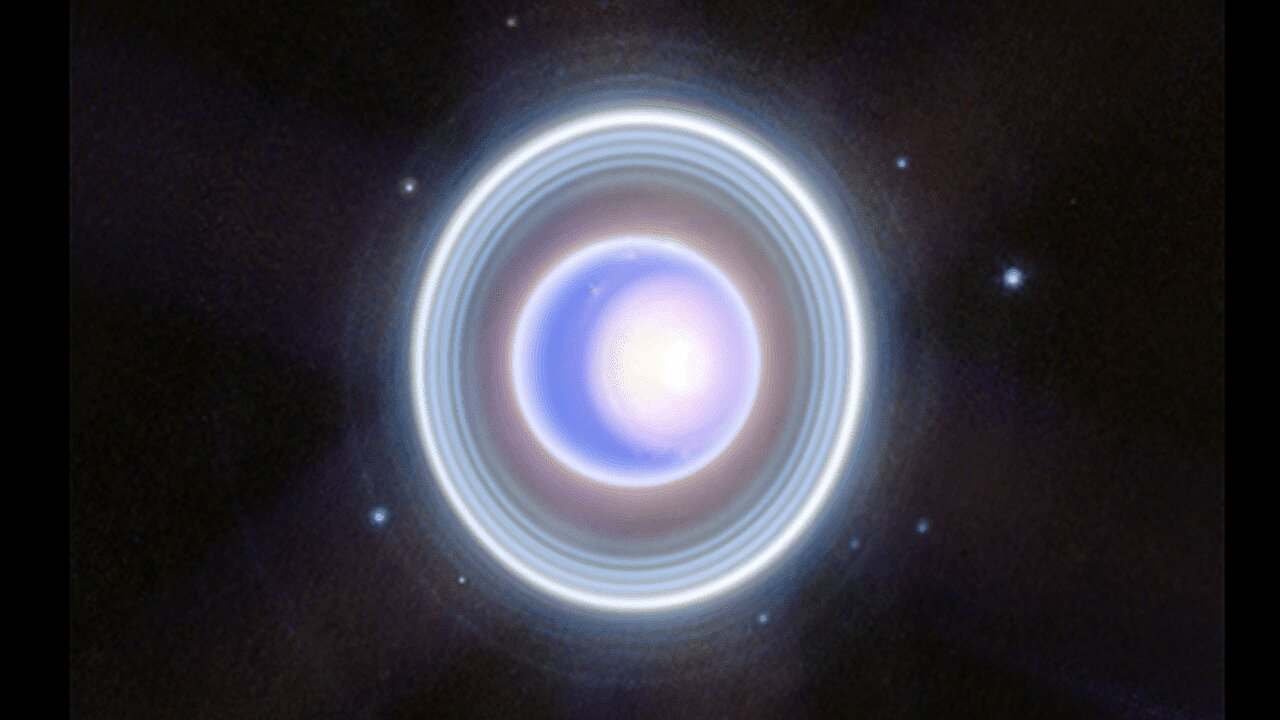When the Voyager 2 spacecraft visited Uranus almost 50 years ago, it discovered a magnetic mystery. Unlike on most planets, the ice giant’s magnetic field is tilted roughly 60° away from its spin axis, creating an asymmetric magnetic field that varies in strength. Understanding the reason behind this anomaly is a key goal of NASA’s proposed flagship mission to the ice giants.
The planet’s tilted magnetic field is also likely behind another curious finding from the Voyager 2 mission, according to new research from M. Acevski and colleagues published in Geophysical Research Letters.
A planet with a strong magnetic field can capture charged particles from space, which then drift around the planet in what’s known as a radiation belt. The spacecraft’s instruments detected proton radiation belts around Uranus far weaker than predicted—about 100 times lower than the expected upper limit. The authors have used new modeling to investigate why.
Most planetary field structures can be modeled with a dipole field, but the researchers added a more complex quadrupole field in their model to mimic the planet’s magnetic axial asymmetry. They used the Boris algorithm (often used to simulate the motions of particles in an electromagnetic field) to model the paths of charged particles surrounding Uranus.
They found that particles change speed at various points in their orbits as they move through stronger and weaker areas of the asymmetric magnetic field. Notably, this effect appears only when the magnetic field is modeled with the additional quadrupole field.
The authors say areas of increased speed spread out the particles, decreasing their density by up to 20% in some regions around the planet. Voyager 2 could have passed through such a low-density area, they suggest, which may explain why the craft found fewer particles in the radiation belts than expected.
This doesn’t fully account for the radiation belt weakness observed by Voyager 2. But the data could help to explain the mechanism behind Voyager 2’s findings and provide new theoretical data on the effects of the planet’s magnetic field.
The proposed flagship mission to Uranus could provide more data, potentially helping us understand the mechanisms behind the planet’s unusual magnetic field.
Reference: M. Acevski et al, Asymmetry in Uranus’ High Energy Proton Radiation Belt, Geophysical Research Letters (2024). DOI: 10.1029/2024GL108961
